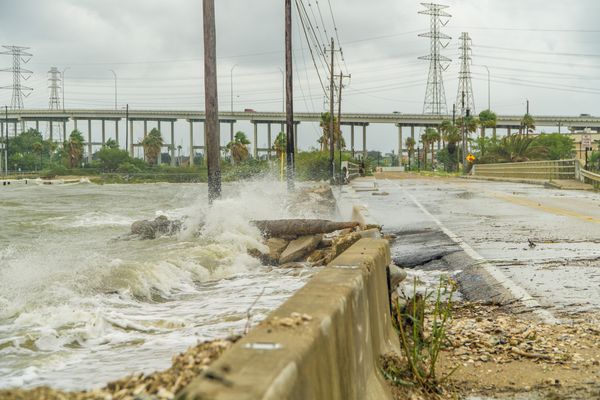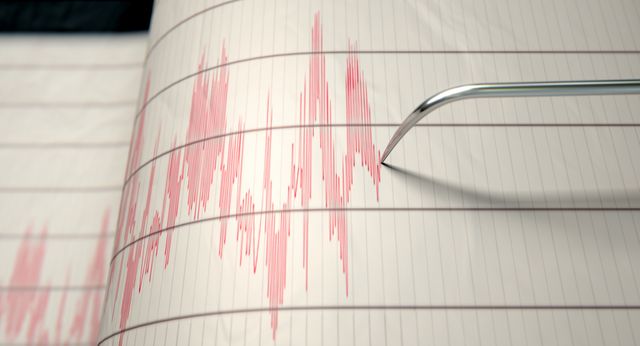1.4.1
Disaster Trends
Trends and Patterns of Disasters
Trends and Patterns of Disasters
Understanding the trends and patterns for tectonic disasters helps to explain the different impacts that take place.


Trends
Trends
- The frequency of tectonic hazards has remained the same over recent times.
- But, the incidence of tectonic disasters and the numbers of people affected has increased.
- So, there is the same number of hazards, but they are affecting more people as disasters now.
- Hydro-meteorological hazards (floods, storms, cyclones and droughts) have become more common. This is linked to climate change and high rates of deforestation.


Earthquakes since 1980
Earthquakes since 1980
- There have been between 15 and 40 disasters per year.
- Deaths have varied in this time period, with some large events in some years.
- Large disasters have skewed numbers of deaths.
- E.g. Banda Aceh (2004) and Haiti (2010).
- Economic losses caused by earthquakes have increased.
- This is because there is more to lose as global affluence increases.


Volcanoes since 1980
Volcanoes since 1980
- The number of volcanic disasters has been less than earthquakes.
- Death tolls from volcanoes have been much lower than from earthquakes.
- There have only been seven eruptions that have killed more than 100 people.
- The wider impacts of some recent eruptions have been significant as large-scale evacuation was needed.
Mega-Disasters
Mega-Disasters
Some disasters can be classed as mega-disasters. These are high magnitude, high impact, infrequent disasters that affect several countries directly or indirectly.


The Himalayas
The Himalayas
- Some very large tectonic disasters have taken place in the collision zone of the Himalayas. These include:
- Kashmir (2005), Sichuan (2008) and Nepal (2015).
- These three events account for 40% of earthquake deaths since 2005.


Other tectonic mega-disasters
Other tectonic mega-disasters
- Major earthquake events also took place in Banda Aceh (2004) and Haiti (2010) killing over 200,000 people each.
- The Tohoku (Japan) earthquake and tsunami in 2011 had worldwide economic impacts.
- The Eyjafjallajokull (Iceland) eruption in 2010 also had a global impact both socially and economically. The ash cloud from the eruption disrupted flights all over the world.
Multiple Hazard Zones
Multiple Hazard Zones
Tectonic disasters may form part of wider multi-hazardous zones (where two or more hazards occur) which may involve hydro-meteorological hazards.


Characteristics
Characteristics
- Multiple hazard zones are usually:
- Geologically young with unstable mountain zones prone to landslides.
- Tectonically active, which means that earthquakes and volcanic eruptions are common.
- Often on major storm tracks either in the mid-latitudes or on tropical cyclone tracks.
- At risk from global climate perturbations such as ENSO.


ENSO
ENSO
- The El Nino Southern Oscillation (ENSO) is a warm ocean current that replaces the usual cold current off the Pacific coast of South America.
- It brings heavier rain than usual on the coast, and drought inland.
- It also affects climates further afield such as California and the Philippines.
- When other hazards occur in ENSO years, their effects could be multiplied.
1Tectonic Processes & Hazards
1.1Tectonic Processes & Hazards
1.2Natural Disasters
1.3Natural Disaster Case Studies
1.4Trends & Patterns
2Option 2A: Glaciated Landscapes & Change
2.1Glaciated Landscapes Over Time
2.2Periglacial Landscapes
2.3Glacial Processes
2.4Glacial Landforms
3Option 2B: Coastal Landscapes & Change
3.1Coastal Landscapes
3.2Coastal Erosion & Deposition
3.3Coastal Risks
4Globalisation
4.1Globalisation
4.2Negatives of Globalisation
4.3Global Shift
4.5Culture
4.6Measuring Development
5Option 4A: Regenerating Places
5.1Types of Economies
5.2Function of Places
5.3Regeneration
5.4Regeneration Case Studies
6Option 4B: Diverse Places
6.1Population Structure
6.2Past & Present Connections
6.3Urban & Rural Spaces
6.4Diversity
6.5Urban & Rural Case Studies
6.6Case Study - Tower Hamlets
6.7Case Study - Sturton-le-Steeple
7The Water Cycle & Water Insecurity (A2 only)
7.1Hydrological Processes Global to Local
7.2Influences on the Water Cycle
7.3Water Insecurity
8The Carbon Cycle & Energy Security (A2 only)
8.1The Carbon Cycle
8.2Energy Consumption
8.3Alternative Energy
8.4Growing Demand for Resources
9Superpowers (A2 only)
9.1Superpowers
9.2Hard & Soft Power
9.2.1Hard & Soft Power
9.2.2Emerging Powers - China Rivalry
9.2.3Emerging Powers - Chinese Sources of Power
9.2.4Emerging Powers - Brazil
9.2.5Emerging Powers - Russia
9.2.6Emerging Powers - India
9.2.7Theories of Development
9.2.8Power Case Studies: Chinese One Belt One Road
9.2.9Power Case Studies: Pakistan Nuclear Arms
9.2.10Power Case Studies: OPEC
9.3IGOs, TNCs & Alliances
10Option 8A: Health & Human Rights (A2 only)
10.1Human Development
10.2Role of Governments & IGOs
10.3Human Rights
10.4Interventions
11Option 8B: Migration & Identity (A2 only)
11.1Globalisation & Migration
11.2Consequences of Migration
11.3Nation States
11.4Responses to Global Migration
Jump to other topics
1Tectonic Processes & Hazards
1.1Tectonic Processes & Hazards
1.2Natural Disasters
1.3Natural Disaster Case Studies
1.4Trends & Patterns
2Option 2A: Glaciated Landscapes & Change
2.1Glaciated Landscapes Over Time
2.2Periglacial Landscapes
2.3Glacial Processes
2.4Glacial Landforms
3Option 2B: Coastal Landscapes & Change
3.1Coastal Landscapes
3.2Coastal Erosion & Deposition
3.3Coastal Risks
4Globalisation
4.1Globalisation
4.2Negatives of Globalisation
4.3Global Shift
4.5Culture
4.6Measuring Development
5Option 4A: Regenerating Places
5.1Types of Economies
5.2Function of Places
5.3Regeneration
5.4Regeneration Case Studies
6Option 4B: Diverse Places
6.1Population Structure
6.2Past & Present Connections
6.3Urban & Rural Spaces
6.4Diversity
6.5Urban & Rural Case Studies
6.6Case Study - Tower Hamlets
6.7Case Study - Sturton-le-Steeple
7The Water Cycle & Water Insecurity (A2 only)
7.1Hydrological Processes Global to Local
7.2Influences on the Water Cycle
7.3Water Insecurity
8The Carbon Cycle & Energy Security (A2 only)
8.1The Carbon Cycle
8.2Energy Consumption
8.3Alternative Energy
8.4Growing Demand for Resources
9Superpowers (A2 only)
9.1Superpowers
9.2Hard & Soft Power
9.2.1Hard & Soft Power
9.2.2Emerging Powers - China Rivalry
9.2.3Emerging Powers - Chinese Sources of Power
9.2.4Emerging Powers - Brazil
9.2.5Emerging Powers - Russia
9.2.6Emerging Powers - India
9.2.7Theories of Development
9.2.8Power Case Studies: Chinese One Belt One Road
9.2.9Power Case Studies: Pakistan Nuclear Arms
9.2.10Power Case Studies: OPEC
9.3IGOs, TNCs & Alliances
10Option 8A: Health & Human Rights (A2 only)
10.1Human Development
10.2Role of Governments & IGOs
10.3Human Rights
10.4Interventions
11Option 8B: Migration & Identity (A2 only)
11.1Globalisation & Migration
11.2Consequences of Migration
11.3Nation States
11.4Responses to Global Migration
Unlock your full potential with Seneca Premium
Unlimited access to 10,000+ open-ended exam questions
Mini-mock exams based on your study history
Unlock 800+ premium courses & e-books